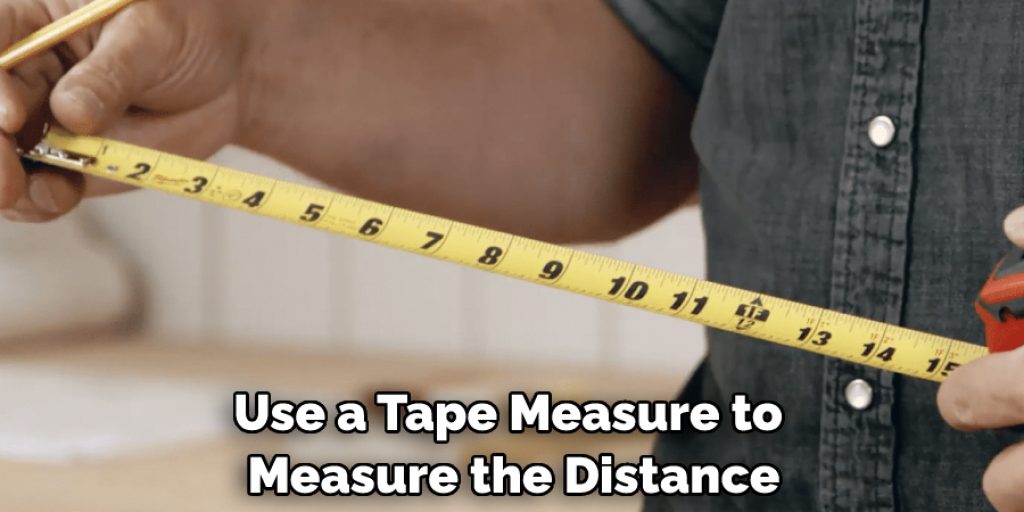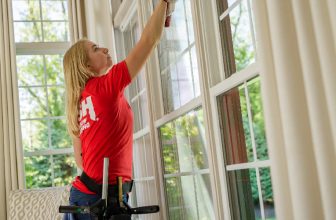How to Measure for Storm Windows
Finding the perfect storm windows for your home can be a tricky job. From properly measuring your window frames to selecting the right hardware, there are multiple steps that need to be taken in order to ensure you get the best fit and style of window.
Thankfully, with our comprehensive guide on how to measure for storm windows, you’ll have all the information needed to make informed decisions when purchasing new windows!

In this post, we will cover how to accurately measure your existing windows as well as offer helpful tips on what type of hardware and features would best suit your needs. Read on to learn more about mastering this easy DIY project – it’s never been easier!
What Is the Standard Size of a Storm Window?
Standard sizes for storm windows vary by manufacturer. However, the standard range is typically between 24 inches and 48 inches in width, with heights ranging from 28 inches to 52 inches. In most cases, a single storm window can cover an area of up to 48″x48″. For larger areas, two or more windows may need to be installed.
It’s important to ensure that your measurements are accurate before installing a storm window, as custom-made versions cannot be returned if they do not fit properly. Window frames should also be taken into account when measuring for a storm window, as they may decrease the overall size of the opening slightly.
When taking your measurements for a new storm window, remember to measure from inside edge to inside edge and use the smallest numbers available. It’s also important to double-check your measurements before purchasing a window, as windows can be expensive and cannot be returned if they are not the proper size.
Installing storm windows is an effective way to improve energy efficiency, reduce noise levels, increase security, and protect your home from weather damage. To ensure that you get the right size for your needs, make sure that you carefully measure for a storm window to guarantee that it fits properly. With accurate measurements and careful installation, you’ll have energy-efficient windows ready in no time!
9 Methods How to Measure for Storm Windows
1. Measuring the Width of the Window:

To measure the width of the window, use a tape measure to measure the distance between the inside edges of the window frame at the top, middle, and bottom of the window. Use the shortest measurement, as this will be the width of the storm window.
Record this measurement in inches. If the window has two sashes, measure the width of each individual sash. However, if the window has one sash, measure the length of the entire window. Although the window may be divided into two or more panes, measure only from the inside edges of the frame.
2. Measuring the Height of the Window:
To measure the height of the window, use a tape measure to measure the distance between the inside edges of the window frame at the left and right sides of the window. Use the shortest measurement, as this will be the height of the storm window.
Record this measurement on a piece of paper. While measuring, make sure that you keep the tape measure level so as to get an accurate measurement. Although it may be tempting to measure from outside edge to outside edge, this measurement will not accurately reflect the size of the storm window you need.
3. Measuring for a Single-Hung Storm Window:
Measure from left to right across the top of the window opening at three points: in the middle and at each end. Measure from top to bottom in three places: in the middle and at each side. Use these measurements to determine which size storm window you need.

If your measurements vary, use the smallest size. If the window opening is wider than 36 inches or taller than 48 inches, you will need to use a special-order storm window. While you’re measuring, be sure to note the direction of the window swing or any other features that will affect the installation of your storm window.
4. Measuring for a Double-Hung Storm Window:
To measure for a double-hung storm window, first measure from left to right across both upper and lower sashes at three points: in the middle and at each end. Then measure from top to bottom in three places: in the center and at each side jamb.
Use these measurements to determine which size storm window you need.
Next, measure the reveal area. This is the space between the window frame and sashes when they are closed. Measure up and down in three places: at the center and on each side jamb. Again, use these measurements to determine which size storm window you need.
5. Measuring for a Casement Storm Window:
To measure for a casement storm window, first determine how many casement units you will need by measuring from left to right across each section of glass at three points: in the middle and at each end. Then measure from top to bottom in three places in the center and at each side jamb.
Use these measurements to determine which size storm windows you need. For example, if your window measures 30 inches wide by 24 inches high, you will need two storm windows that are 24″ wide by 30″ high. Make sure to measure accurately to ensure a proper fit.
6. Measuring for an Awning Storm Window:
To measure for an awning storm window, first determine how many units you will need by measuring from left to right across each section of glass at three points: in the middle and at each end.
Then measure from top to bottom in three places in the center and at each side jamb. Use these measurements to determine which size storm windows you need. Lastly, measure the height of your window from the top to the sill for the awning storm window.

7. Measuring for a Hopper Storm Window:
To measure for a hopper storm window, first determine how many units you will need by measuring from left to right across each section of glass at three points: in the middle and at each end. Then measure from top to bottom in three places in the center and at each side jamb.
Use these measurements to determine which size storm windows you need. Once you have the measurements, you can begin to measure for a hopper storm window. However, you should also take any other measurements that may be necessary to ensure the window fits correctly.
8. Determining Which Style of Storm Windows You Need:
There are several different styles of storm windows available on today’s market, including single-hung, double-hung, casement, awning, and hopper. The style that is right for your home will depend on both your personal preferences as well as the type of windows that you have. If you are unsure about which style would be best, consult with a professional who can help you make a decision.
9. Deciding on What Type of Glass to Use:
There are two main types of glass that are used in storm windows clear glass and tinted glass. Clear glass is less expensive, but it does not offer any UV protection. Tinted glass is more expensive, but it helps to reduce glare and UV rays.
If you live in an area that gets a lot of sun, it is worth considering tinted glass for your storm windows. The type of glass you choose will also affect the amount of energy efficiency your storm windows provide. Be sure to talk to your window provider about their recommendations.
Some Common Mistakes When Measuring for Strom Windows
1. Not Accounting for Obstructions, Such as Trim or Screens:
When measuring for storm windows, it’s important to account for any obstructions, such as trim or screens, that could interfere with the window’s proper installation. These obstructions can affect the size of the window needed, and your measurements should reflect this.
2. Not Taking into Consideration the Type of Window:
When measuring storm windows, it’s important to make sure you are accounting for the type of window you are installing. Different types of windows will require different measurements, so make sure you know what type of window you have before taking your measurements.
3. Not Taking Proper Measurements:
When measuring storm windows, it’s important to take accurate measurements in order to ensure a proper fit. Make sure to measure both the width and height of the window opening and also account for any obstructions that could affect the size of the window needed.

Conclusion
It’s always a good idea to double-check your measurements before ordering storm windows for your home. It’s important to remember that storm windows are an investment, so taking careful measurements and having the right window size is key.
If you’re not sure how to measure for storm windows or need assistance, it can be helpful to get in touch with an experienced professional who will help ensure your order is correct. With the right sizes, materials and installation process in place, you’ll soon be enjoying the benefits of storm windows.




